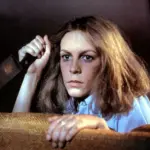So, Barbie has been totally killing it at the box office lately. In fact, it's currently doubled the box office numbers of "Oppenheimer" during the same release period. This remarkable box office achievement is particularly notable given the film's female-centered perspective.
However, the film has sparked a lot of debate about feminism due to its ridicule of men under patriarchy and the feminist dilemma in free capitalism. While some view "Barbie" as an excellent film with a feminist perspective, others have been critical. For instance, in East Asia, such as South Korea and China, many male viewers have attacked it as a bad movie that belittles men. In my opinion, the global release and discussion of "Barbie" is itself an attempt to empower women in popular culture, giving Barbie more meaning. In the following section, I will discuss the story of Barbie's birth and analyze the changes in the Barbie image to illustrate the positive impact of "Barbie" in revealing the feminist implications of the Barbie image.

Before we jump to any conclusions about whether Barbie is a good or bad film, let's talk about how the idea of Barbie came to be in the first place.
We all know that Ruth Handler, Barbie's creator, designed the famous doll for her daughter Barbara. Ruth noticed that her son, as a boy, had all these fun toys to play with, like colorful cars, trucks, planes, rockets and even toy guns, which allowed him to imagine himself as an engineer, pilot, astronaut, or even a warrior in the future. Girls, on the other hand, often received dolls and dollhouses. Through playing with dolls, girls were led to learn how to be good housewives, take care of children, and do housework. The earliest dollhouse was not even a toy, but a teaching tool for young girls to practice how to be a housekeeper.

(A 17th-century dollhouse, on display in Amsterdam )
In summary, prior to Barbie, most girls' toys were small baby dolls, but Barbie changed that by encouraging girls to explore beyond the home. Barbie is not simply a baby doll that girls care for, but a representation of their own consciousness. Through Barbie, girls can envision themselves as mature women with a beautiful appearance and their own aspirations, rather than only serving others. They can imagine themselves in any profession, including actor, lawyer, doctor, scientist, or even president, as Barbie has had over 100 different careers to date. Regardless of whether intentional or not, this creative process imbues Barbie with a layer of feminist significance by expanding girls' imaginations of themselves in the future.

Another feminist meaning that Barbie possesses is her independent life. In today's world, it is not uncommon for a woman to be economically independent, own her own property, and have a boyfriend but not live with him. However, in the 1960s when Barbie was born, this was a lifestyle far beyond the actual living conditions of women. Despite having a boyfriend, Barbie does not live with him. Her wealth belongs to herself, and her house has various spaces that serve her own needs, allowing her to spend her time as she pleases. This provides young girls with an alternative vision for their future personal life, one that extends beyond the traditional role of a housewife.
My own growing up story relates to this too. As a kid, I was super jealous when I saw my friend's legit Barbie dollhouse for the first time. I mean, who wouldn't want their own crib with a living room, bedroom, dining room, and dressing room? And don't even get me started on the PJ parties with my girls. It wasn't common for us kids to have designated PJs back in the day, but Barbie's world made us think about all the cool stuff we could do in the future and how we didn't have to settle for just a basic family life. The movie also highlights Barbie's independent lifestyle. Ken never stays overnight, and Barbie has girls' nights instead. The Barbies are very protective of their property ownership and become upset when Ken takes what belongs to them. Although Barbie's world may seem overly perfect and unrealistic at times, it promotes a valuable message to young girls to explore different possibilities for their future and live their lives independently.

However, after more than 60 years of evolution, Barbie's image has become outdated. I think one important reason is the deconstruction of feminism by consumerism. When so-called female consciousness is framed within capitalist consumer society, the Barbie image, which was originally empowering for women, may become a shackle for female. The excessive emphasis on appearance makes playing with Barbie an imitation of how to become a beautiful woman. For example, Barbie's appearance is extremely false and almost impossible for ordinary women to achieve. Blonde hair, large breasts, slim waist, and long legs are the specific manifestations of society's almost harsh aesthetic requirements for women. In the movie, when Barbie starts to contemplate death, the dream world begins to collapse, and the most frightening thing for Barbies is the change in appearance. When her feet become flat, cellulite appears on her thighs, and her body feels tired in the morning, Barbies were scared and choose to enter the real world in order to correct all of this.

Focusing solely on appearance can lead to a significant problem: it inevitably reduces Barbie's potential career options to a simple dress-up game. As a result, the hardships of pursuing freedom, equality, and rights in reality are covered up by a dreamy but unrealistic dress-up game of "girls can become anyone as long as they want". Just as the "love yourself" course has become a slogan for continuous shopping, the feminist connotation in the original context has been replaced by consumerism. What it conveys is no longer "you can become anyone", but "you can become any beautiful and successful Barbie through consumption and dressing up". Therefore, in a sense, Barbie has become an outdated female idol and a representative of women spending a lot of time and money on beauty in a liberal consumer society. This also leads to the reason why many female viewers do not like this movie without watching it. When we as parents are unwilling to buy Barbie toys for our daughters, we naturally will not go to see a movie centered around Barbie.
During discussions promoting the film "Barbie", director Greta Gerwig pointed out the contradictions in Barbie's image. She noted that although Barbie, with her astronaut outfit, represented progress for women during a time when they couldn't even apply for credit cards independently, her figure appeared artificial. In fact, Barbie's initial image portrayed a perfect woman according to male-dominated beauty standards. Even if a beautiful actress like Margot Robbie plays Barbie, some may still argue that she doesn't meet these standards. Greta believes it's important for the film to honestly depict this contradiction in Barbie's image. So the idealized world of Barbie only appears briefly at the beginning of the film, with the focus shifting to the conflicts and contradictions between the real world and the Barbie world.

This contradiction of the figure of Barbie can partially explain why we may love Barbie when we are kids, but gradually abandon her as we grow up. However, in my opinion, the rejection of Barbie by adult women also carries a layer of misogyny. Barbie's strong feminine qualities and close association with young girls have led her to be perceived as a representative of a childish, exaggerated, and even foolish image in popular culture. The movie "Barbie" also illustrates this phenomenon. When Barbie comes to school in the real world, girls don't like her. Just like some women express disdain for Barbie in an attempt to distance themselves from the overly feminine qualities she represents. This psychological phenomenon is worth pondering.
Comparing the attitude of popular culture towards boys' qualities highlights the negative connotations that "little girl" qualities carry. Boys are encouraged to explore the world from a young age and their mischief is seen as a reflection of their curiosity. Boys' qualities are often romanticized, with an innocence that is tolerated. When we describe someone as still like a child in a good way, we usually mean like a little boy. On the other hand, the careful and understanding qualities instilled in girls through sex education are distorted into an annoying and fragile quality in the adult world. "Like a girl" is not an unequivocally positive description for both adult women and men.
Though in recent years, there has been progress in gender equality in society, reducing negative gender stereotypes about little girls, but not completely eliminating them. So, wearing all pink and dressing like a Barbie, whether in movies or the real world, is still something that makes many women feel embarrassed. Considering this, we can see the impact of the movie "Barbie" in changing this pink shame. After the release of Barbie, moviegoers around the world spontaneously wore pink clothes to the cinema. This Pink dress code for Barbie became a new trend, even a female-centric entertainment carnival. This trend partially helped to eliminate the shame associated with pink, indirectly changing the image of Barbie girl in popular culture.

Jennimai Nguyen, 25, and Livi Empson, 24, pose for a portrait in Barbie-inspired outfits outside the AMC Kips Bay theater in Manhattan on July 20.Credit...Maansi Srivastava/The New York Times
At the end of the movie, there was a montage of growth videos from the crew. In this scene, Barbie closed her eyes, feeling the complex emotions of women's growth, and shed a tear. When I walked out of the cinema, I also had tears in my eyes. Because we all know how hard it would be for every Barbie in a real world.
In the movie's Easter egg, Barbie comes to the real world, and the first thing she does is not find a job, but go to a gynecologist. This scene was unexpected, but reasonable. Living one's life in the real world is no longer a simple slogan for women today, but a life experience composed of numerous small and complicated things. Compared to loving oneself through shopping and dress up, learning to regularly see a gynecologist is a more practical way to "love oneself."
Combined with the well-presented contradictions of Barbie in the movie, I believe that "Barbie" has become a commercially successful film with historical significance from a successful female perspective. It explicitly points out the positive significance of the cultural image of Barbie in encouraging women to pursue self-development, as well as the negative impact of exacerbating women's appearance anxiety and self-objectification in the process of historical evolution.
In my opinion, the core of the movie is not to praise or deny the image of Barbie, but to ask every female viewer through Barbie's adventures and challenges in returning to the real world: Who are you? What kind of person do you want to be? What kind of life do you want to live?
The movie does not provide us with the answer; it is just a movie.It is fun and light-hearted, while mocking patriarchy, empowers Barbie with feminist meanings again, and that is enough. Eventually, we will return to our real lives and find our own answers.

















































View replies 1
View replies 1
View replies 0
View replies 0